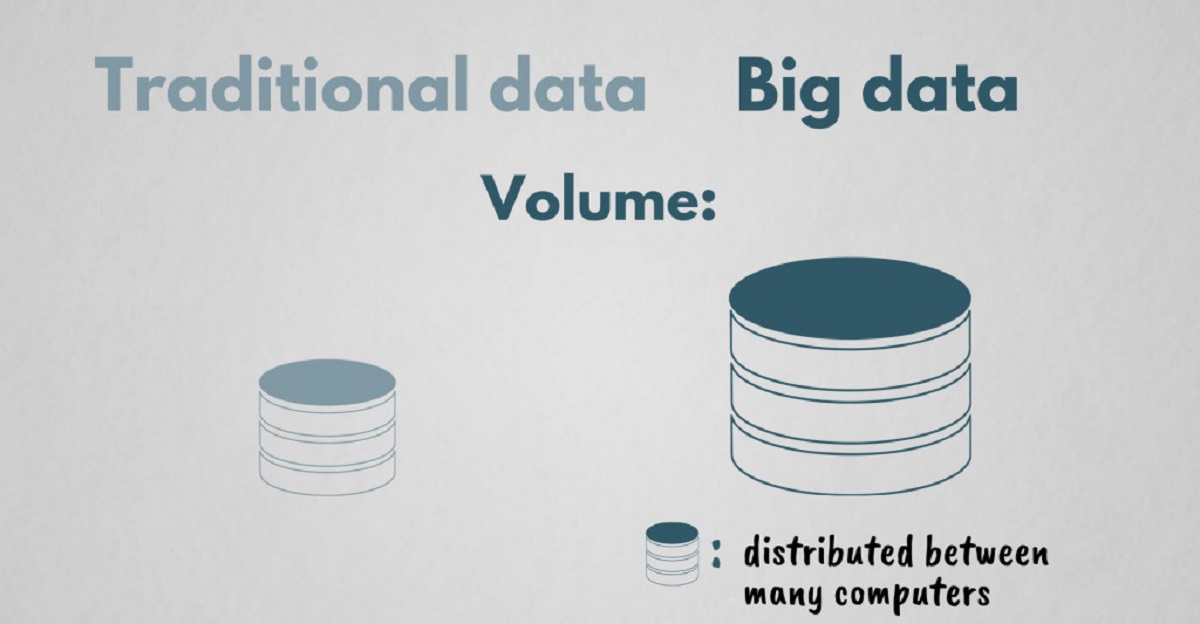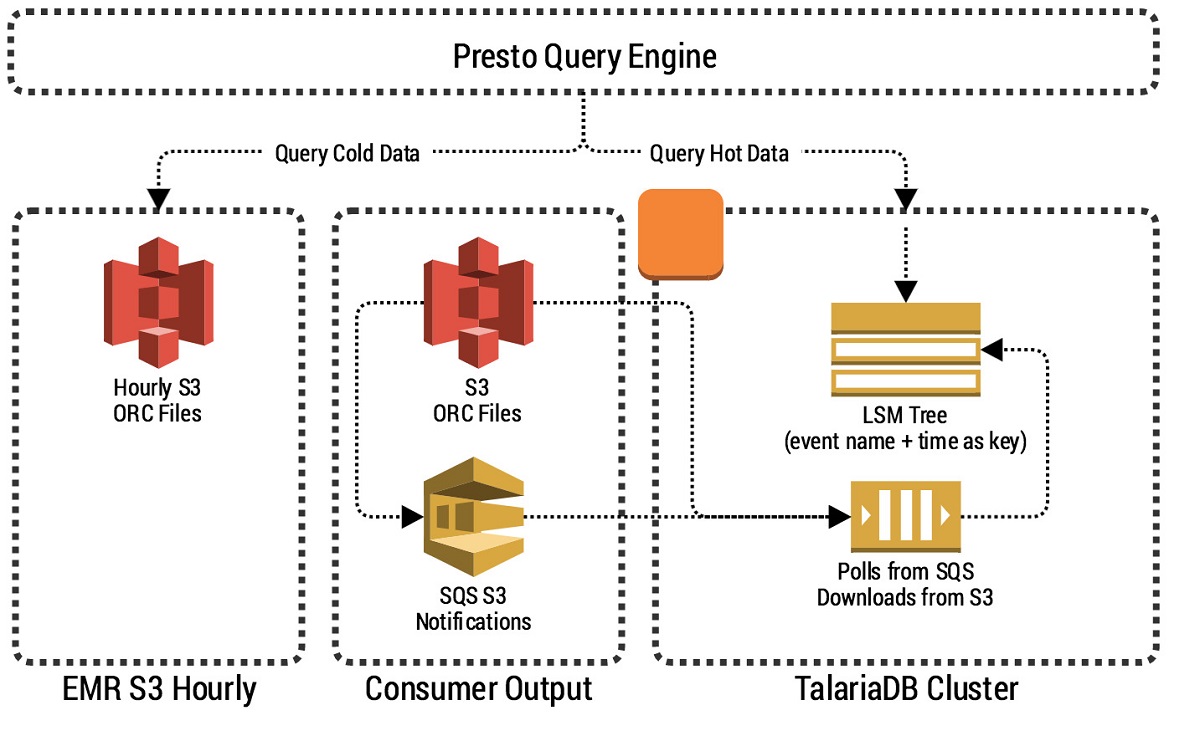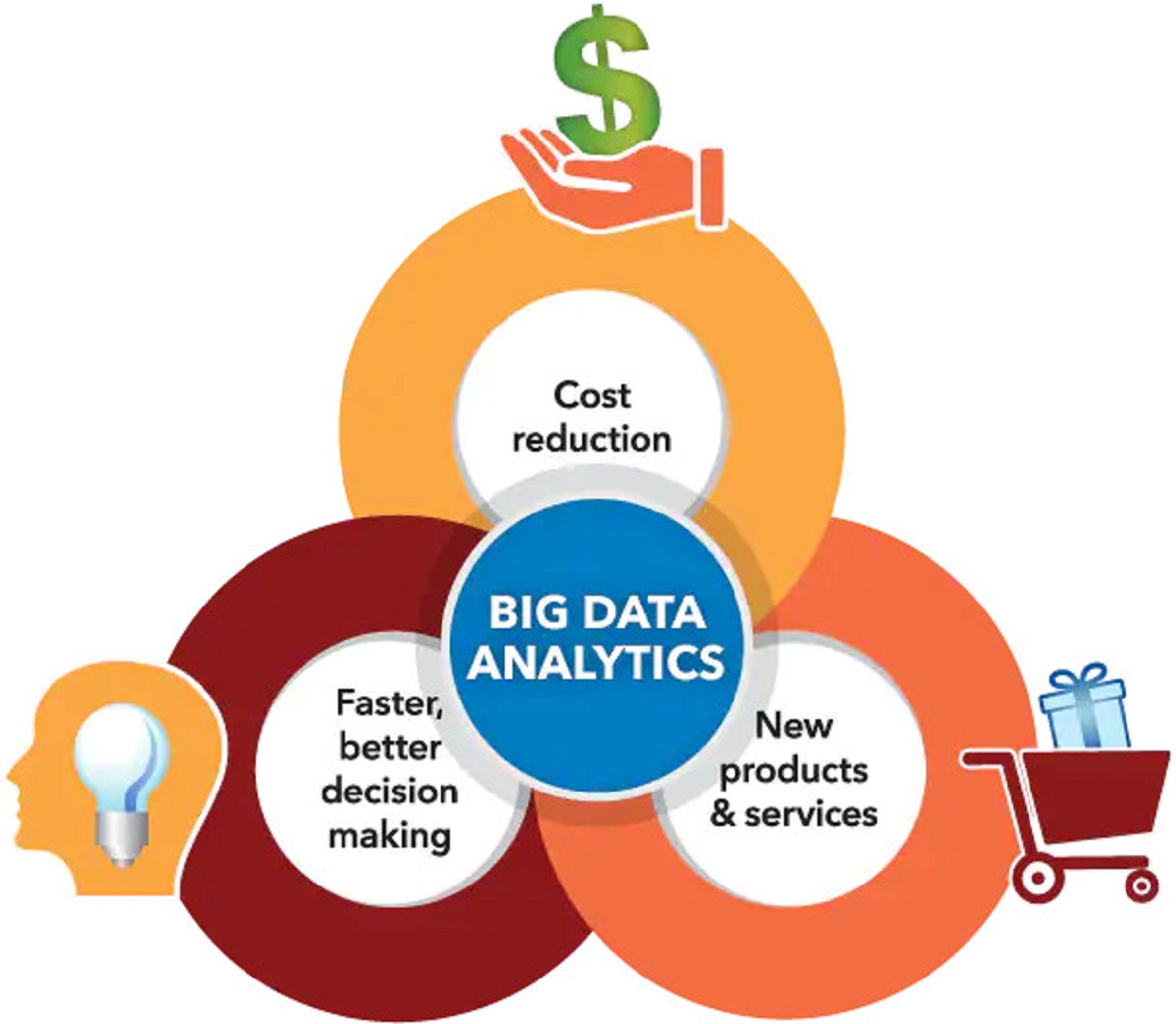Introduction
When it comes to managing and analyzing large volumes of data, traditional database systems often fall short. The exponential growth in data volume, variety, and velocity has given rise to the need for specialized database systems that can handle big data efficiently. These systems are designed to provide high scalability, low latency, and flexible data models to meet the demands of modern data-intensive applications.
Big data encompasses different types of data, including structured, semi-structured, and unstructured data. It includes data from social media, IoT devices, sensor networks, transactional systems, and more. To handle such diverse and vast datasets, various database systems have emerged, each optimized for specific characteristics of big data.
In this article, we will explore different types of database systems optimized for big data, their features, and use cases. Understanding these options will help organizations make informed decisions when it comes to choosing the right database system for their specific big data requirements.
Before diving into the specific database systems, it is important to differentiate between traditional relational databases and newer NoSQL databases. Relational databases are widely used and have a well-defined structure with tables, rows, and columns. They excel in handling structured data but may struggle with the complexity and scale of big data. On the other hand, NoSQL databases are designed to handle unstructured and semi-structured data at scale, offering high scalability and flexibility.
Now, let’s delve into the various types of database systems optimized for big data:
Relational Database Systems
Relational database systems have been the industry-standard for decades. They are based on the relational model, where data is organized into tables with rows and columns. Each row typically represents a record, while columns represent specific attributes or fields of the data. Relational databases use Structured Query Language (SQL) to retrieve and manipulate data.
These databases excel at maintaining data integrity through enforced relationships and constraints defined using primary and foreign keys. They provide ACID (Atomicity, Consistency, Isolation, Durability) properties, ensuring data consistency and reliability. In addition, relational databases offer powerful query optimization techniques for complex analytical queries.
However, traditional relational databases may encounter challenges when it comes to handling massive amounts of unstructured or semi-structured data. They may have limitations in terms of scalability and flexibility, as their rigid schema design and indexing can slow down performance and limit data model changes.
That being said, modern relational databases have evolved to support big data requirements. They incorporate features like partitioning, sharding, and replication to handle large-scale data. They also offer support for distributed data processing and parallel query execution, improving performance.
Some popular relational database systems used in big data scenarios include:
- MySQL: A widely adopted open-source relational database that provides good performance and scalability for big data use cases.
- PostgreSQL: Another open-source database that offers advanced features like JSON support and indexing for efficient querying of big data.
- Oracle Database: A commercial database with robust scalability options for managing large volumes of data.
Relational database systems are suitable for structured data and applications that require a high degree of data integrity and consistency. They are commonly used for transactional systems, financial applications, and business intelligence.
While relational databases have their strengths, it is important to consider other database options when dealing with unstructured or rapidly changing data. Let’s explore the NoSQL database systems next.
NoSQL Database Systems
NoSQL (Not Only SQL) database systems have emerged as an alternative to traditional relational databases, specifically designed to handle the challenges of big data. Unlike relational databases that use a fixed schema, NoSQL databases allow for flexible, schema-less data models. They are highly scalable, distributed, and designed to handle large volumes of unstructured or semi-structured data efficiently.
NoSQL databases are categorized into several types based on their data model. Let’s explore a few of the most common NoSQL database types:
Key-Value Stores
Key-value stores are the simplest form of NoSQL databases, where data is stored as a collection of key-value pairs. These databases offer excellent performance due to their ability to retrieve data directly by key. Key-value stores are suitable for high-throughput applications and caching data.
Document Stores
Document stores store data in flexible, self-describing documents, usually in JSON or XML format. Each document can vary in structure, making document stores ideal for managing unstructured or semi-structured data. These databases provide powerful querying capabilities and are commonly used for content management systems, user profiles, and collaborative applications.
Columnar Databases
Columnar databases store data in columns rather than rows, allowing for efficient compression and query performance. These databases excel at handling large volumes of structured data and analytical workloads. Columnar databases are commonly used in data warehousing, data analytics, and business intelligence applications.
Graph Databases
Graph databases are designed to represent and query complex relationships between data entities, such as social networks, recommendation systems, and fraud detection. They use a network of nodes and edges to represent data and provide powerful traversal and pattern-matching capabilities.
Wide Column Stores
Wide column stores, also known as column-family stores, enable highly scalable and distributed storage of structured or semi-structured data. These databases can handle massive workloads and are commonly used in use cases like time series data, IoT data, and real-time analytics.
Some popular NoSQL database systems include:
- MongoDB: A widely used document store database with flexible schema design and horizontal scalability.
- Cassandra: A scalable and highly available wide column store database that excels at handling large amounts of data across multiple datacenters.
- Neo4j: A popular graph database that allows for efficient traversal and querying of complex relationships.
NoSQL databases provide the flexibility and scalability needed to handle big data challenges, making them well-suited for modern data-intensive applications. However, it’s essential to carefully evaluate the specific characteristics and requirements of your data to choose the most appropriate NoSQL database type.
Key-Value Stores
Key-value stores are a popular type of NoSQL database system that operates on a basic premise: data is stored as a collection of key-value pairs. Each key is unique and serves as a direct identifier for the associated value. This simplistic data model allows for fast and efficient data retrieval by directly accessing values using their corresponding keys.
Key-value stores are known for their high-performance read and write operations, making them ideal for applications that require high throughput and low latency. They excel at handling simple data structures and are well-suited for caching, session management, and storing user preferences.
One of the main advantages of key-value stores is their scalability. They can easily handle large volumes of data by partitioning the data across multiple nodes. This distributed architecture allows for horizontal scaling, ensuring that the database can grow as data requirements increase.
Another strength of key-value stores is their ability to handle structured and unstructured data. The values in a key-value pair can range from simple strings and numbers to more complex data structures like JSON objects. This flexibility enables developers to store a wide variety of data types in the database.
Some key-value stores offer additional features such as automatic data replication for high availability and fault tolerance. This ensures that data remains accessible even if certain nodes within the database fail. Additionally, many key-value stores provide support for data expiration, allowing developers to define a time-to-live (TTL) for their data to automatically remove outdated or expired entries.
Popular key-value store databases include:
- Redis: An in-memory key-value store known for its fast performance and robust feature set, including data persistence, pub/sub messaging, and support for different data structures.
- Memcached: A distributed memory caching system that stores key-value pairs in RAM to accelerate data access and improve application performance.
- Riak: A highly available and fault-tolerant key-value store that focuses on providing scalable and reliable data storage.
Key-value stores are a valuable tool when it comes to handling large amounts of simple and frequently accessed data. By leveraging a simple data model and high-performance operations, key-value stores offer a lightweight and efficient option for storing and retrieving data in big data scenarios.
Document Stores
Document stores are a type of NoSQL database system that organizes data as flexible, self-describing documents. Each document is typically stored in a standardized format, such as JSON or XML, and can have its own structure and schema. This flexibility allows document stores to handle unstructured or semi-structured data efficiently.
The document model is well-suited for applications that deal with complex and evolving data structures. Unlike relational databases, which require a predefined schema, document stores allow for dynamic and schema-less data models. This means that documents within the same collection or database can have different fields and structures, providing the flexibility to store diverse types of data.
Document stores excel at handling use cases where data has nested, hierarchical structures. For example, in a content management system, each document can represent a webpage with attributes like title, author, and content. The attributes can further contain nested data, such as tags, comments, or related media files.
Document stores offer powerful querying capabilities that allow developers to retrieve data based on its content. They provide features like indexing and full-text search, enabling efficient and precise retrieval of relevant documents. The ability to query based on document content makes document stores well-suited for text search, content recommendation, and personalization applications.
Furthermore, document stores support atomic updates, allowing modifications to specific fields within a document without having to update the entire document. This enables efficient and granular updates, reducing data transfer and improving performance. Additionally, document stores often provide built-in support for versioning and conflict resolution, ensuring data consistency in distributed environments.
Popular document store databases include:
- MongoDB: One of the most widely used document store databases, known for its flexible schema design, automatic sharding, and horizontal scalability.
- Couchbase: A distributed document store database that combines the flexibility of JSON documents with high-performance caching and global replication capabilities.
- Amazon DynamoDB: A fully managed document store database provided by Amazon Web Services (AWS), offering seamless scalability and low-latency access to data.
Document stores provide a versatile and efficient solution for managing unstructured or semi-structured data in big data scenarios. Their flexible data model, powerful querying capabilities, and scalability make them a popular choice for a wide range of applications, from content management systems to data analytics platforms.
Columnar Databases
Columnar databases, also known as column-oriented databases, are a specific type of database system optimized for efficient storage and processing of large volumes of structured data. Unlike traditional row-oriented databases, which store data in rows, columnar databases organize data in a columnar fashion, where each column contains values of a specific attribute or field.
Columnar databases offer several advantages over row-oriented databases when it comes to big data scenarios. One of the key benefits is improved query performance. By storing data in a columnar format, columnar databases can achieve higher compression ratios and reduce the amount of disk I/O required for queries. This results in faster data retrieval and analysis, especially for analytical workloads that involve aggregations, filtering, and complex queries.
Another advantage of columnar databases is their ability to efficiently handle large-scale data analytics. By analyzing data column by column, rather than row by row, these databases can leverage data parallelism and execute queries in a highly optimized manner, leading to significant performance gains. This makes columnar databases well-suited for data warehousing, business intelligence, and reporting applications.
Additionally, columnar databases provide excellent support for data compression. Since each column contains values of the same or similar data types, compression algorithms can be more effective, reducing storage requirements and improving overall system performance. Moreover, columnar databases often utilize techniques like data skipping and predicate pushdown to further optimize query execution and minimize the amount of data read from disk.
Popular columnar database systems include:
- Vertica: A high-performance columnar database designed for large-scale analytics, capable of handling massive amounts of data with a focus on real-time and near-real-time processing.
- Amazon Redshift: A fully managed cloud-based columnar database provided by Amazon Web Services (AWS), optimized for data warehousing and analytics workloads.
- Apache Cassandra: Although primarily known as a wide column store, Cassandra also incorporates columnar storage capabilities, making it suitable for analytical use cases.
Columnar databases offer significant advantages in terms of query performance and scalability for large-scale data analytics. Their ability to efficiently store and process structured data, combined with advanced compression techniques, makes them a powerful tool for organizations looking to gain insights from their big data.
Graph Databases
Graph databases are a specialized type of database system that is designed to handle highly connected data and complex relationships between entities. They are used to model and query data in the form of nodes (vertices) and edges, representing entities and the relationships between them, respectively.
The graph data model allows for the representation of real-world relationships and dependencies with great flexibility and accuracy. It is particularly beneficial in scenarios where understanding and analyzing these relationships are crucial, such as social networks, recommendation systems, fraud detection, and knowledge graphs.
Graph databases excel at traversing and querying relationships, enabling efficient and expressive queries that capture complex patterns and connections in the data. The structure of a graph database allows for quick traversals from one node to another, following edges and exploring the related nodes. This makes graph databases ideal for queries that involve path-finding, community detection, and recommendation algorithms.
In addition to providing efficient graph traversals, graph databases offer advanced indexing techniques to improve query performance. They use techniques like property indexing and label-based indexing to quickly locate nodes and edges based on their attributes or labels. This indexing capability significantly speeds up queries that involve filtering and searching based on specific properties or labels.
Popular graph database systems include:
- Neo4j: One of the most popular and widely used graph databases, known for its high performance and expressive query language (Cypher).
- Amazon Neptune: A fully managed graph database service provided by Amazon Web Services (AWS), offering high scalability and availability for graph-based applications.
- JanusGraph: An open-source, distributed graph database that combines graph modeling capabilities with the scalability and fault tolerance offered by distributed systems.
Graph databases are valuable tools when it comes to modeling and analyzing complex relationships and dependencies in big data scenarios. Their ability to efficiently handle highly connected data and perform expressive graph traversals make them indispensable for applications that rely on understanding the connections between entities.
NewSQL Databases
NewSQL databases are a class of database systems that combine the scalability and flexibility of NoSQL databases with the ACID (Atomicity, Consistency, Isolation, Durability) properties of traditional relational databases. These databases aim to bridge the gap between the relational and NoSQL worlds, providing a balance between the benefits of both.
While NoSQL databases excel at scaling horizontally and handling large volumes of unstructured or semi-structured data, they may sacrifice certain transactional guarantees. On the other hand, traditional relational databases provide strong consistency and transaction support but may face scalability limitations, especially in distributed environments.
NewSQL databases address these challenges by introducing innovative approaches to achieve scalability without compromising data consistency. They leverage distributed architectures, parallel processing, and optimized database designs to provide horizontal scalability while still maintaining ACID properties.
NewSQL databases often embrace modern hardware and software technologies to achieve high-performance throughput, low-latency operations, and fault-tolerance. They often utilize advanced indexing and caching techniques, distributed query processing, and mechanisms for automatic data sharding to ensure efficient data storage and retrieval.
One notable characteristic of NewSQL databases is their ability to handle complex transactions involving multiple data operations. They provide transactional consistency with strong isolation levels and durability guarantees, making them suitable for use cases that require strict data integrity and reliability.
Some popular NewSQL database systems include:
- Google Spanner: A globally distributed relational database that combines scalability with strong consistency, enabling global transactions across multiple datacenters.
- CockroachDB: An open-source distributed database that offers linear scalability, strong consistency, and built-in fault tolerance.
- VoltDB: A high-performance, in-memory NewSQL database designed for real-time processing and applications that require extreme low-latency.
NewSQL databases are well-suited for applications that demand the scalability and flexibility of NoSQL systems, but also require strong consistency and transactional support. They are commonly used in industries such as finance, e-commerce, and real-time analytics, where both data integrity and scalability are essential.
Choosing the Right Database System for Big Data
With the multitude of database systems available for handling big data, choosing the right one can be a daunting task. Different database systems offer distinct features, strengths, and trade-offs, making the selection process crucial for the success of big data projects. Here are some key considerations to help you make an informed decision:
Data Characteristics:
Start by understanding the characteristics of your data. Is it structured, semi-structured, or unstructured? What is the data volume, variety, and velocity? Different database systems are optimized for different types of data. Relational databases excel at structured data and complex queries, while NoSQL databases handle unstructured and semi-structured data efficiently.
Scalability Requirements:
Evaluate the scalability needs of your application. Will your data volume grow significantly over time? Do you need to handle high read and write throughput? NoSQL databases, like key-value stores or columnar databases, are known for their horizontal scalability, while NewSQL databases offer scalability with strong consistency.
Query and Analysis Requirements:
Consider the types of queries and analysis you need to perform on your data. If you require complex joins, aggregations, and ad hoc queries, a relational database may be a suitable choice. If you need to traverse complex relationships or perform graph-based computations, a graph database is a better fit. Document stores are ideal for flexible querying of unstructured or semi-structured data.
Performance and Latency:
Determine the performance and latency requirements of your application. Are quick response times and low-latency operations crucial? In-memory databases like Redis or VoltDB offer fast, real-time processing, while columnar databases optimize for analytical workloads. Consider factors like data compression, indexing, and caching mechanisms that can impact performance.
Data Consistency and Durability:
Consider the level of data consistency and durability your application requires. Do you need strong consistency for transactional integrity? Are durability guarantees necessary? Relational databases and NewSQL databases provide ACID properties, while NoSQL databases often offer eventual consistency or tunable consistency models.
Cost and Operational Complexity:
Lastly, consider the cost and operational complexity of the database system. Evaluate factors like licensing costs, hardware requirements, support options, and ease of deployment. Additionally, consider the expertise available within your team or organization to effectively manage and maintain the chosen database system.
It’s important to note that in some cases, a combination of different database systems may be required to address different aspects of your big data needs. A hybrid approach that includes a mix of relational, NoSQL, and even NewSQL databases can be a viable solution to ensure optimal performance and flexibility.
In summary, choosing the right database system for big data involves carefully evaluating the characteristics of your data, scalability requirements, query and analysis needs, performance considerations, data consistency requirements, and cost factors. By considering these aspects, you can select a database system that best aligns with your specific big data use case and empowers you to efficiently store, manage, and analyze your data.
Conclusion
Choosing the right database system for big data is a critical decision that can greatly impact the success of your data-intensive applications. Relational databases, NoSQL databases, graph databases, columnar databases, and NewSQL databases each offer unique features and strengths, making them suitable for different types of data and use cases.
Relational databases excel at handling structured data and complex queries while providing strong consistency and transactional support. NoSQL databases offer flexibility and scalability for unstructured and semi-structured data, with different types like key-value stores, document stores, columnar databases, and graph databases catering to specific requirements. Columnar databases optimize for analytical workloads, while graph databases excel at capturing and querying complex relationships. NewSQL databases combine the scalability of NoSQL with the transactional guarantees of relational databases.
When choosing a database system, consider factors such as the data characteristics, scalability requirements, query and analysis needs, performance and latency expectations, data consistency and durability requirements, and cost and operational complexity. Evaluating these aspects will help you select the most appropriate database system for your big data needs.
In some cases, a hybrid approach that combines different database systems may be the optimal solution. By leveraging the strengths of various databases, you can effectively handle different aspects of your big data challenges and ensure optimal performance and flexibility.
Ultimately, the right database system for big data will depend on the specific requirements and goals of your application. Carefully evaluating the options, considering your data’s characteristics, and understanding the trade-offs will empower you to make an informed decision and successfully navigate the world of big data.

























